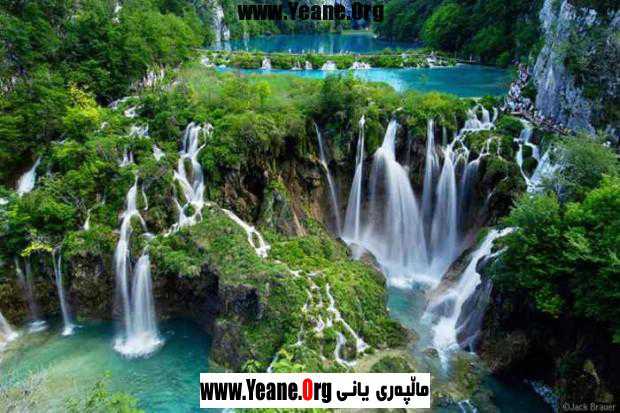كۆمهلێك وێنهی زۆر جوانی سروشت


Photograph by Martin St-Amant – Wikipedia
1. Iguazu Falls aka Iguassu Falls or Iguaçu Falls, are waterfalls of the Iguazu River located on the border of the Brazilian state of Paraná and the Argentine province of Misiones. The falls divide the river into the upper and lower Iguazu.

Devil’s Throat – Photograph by Luca Galuzzi – www.galuzzi.it
2. The waterfall system consists of 275 falls along 2.7 kilometers (1.67 miles) of the Iguazu River.

Photograph by Martin St-Amant
3. The first European to find the falls was the Spanish Conquistador Álvar Núñez Cabeza de Vaca in 1541, after whom one of the falls in the Argentine side is named. The falls were rediscovered by Boselli at the end of the nineteenth century, and one of the Argentine falls is named after him.

Photograph by Claudio Elias
4. Some of the individual falls are up to 82 meters (269 ft) in height, though the majority are about 64 metres (210 ft). The Devil’s Throat (Garganta del Diablo in Spanish or Garganta do Diabo in Portuguese), a U-shaped, 82-meter-high (269 ft) , 150-meter-wide and 700-meter-long (490 by 2,300 feet) cataract, is the most impressive of all, marking the border between Argentina and Brazil. Two thirds of the falls are within Argentine territory.

Photograph by Martin St-Amant
5. About 900 meters (0.56 miles) of the 2.7-kilometer length (1.67 miles) does not have water flowing over it. The edge of the basalt cap recedes only 3 mm (0.1 in) per year. The water of the lower Iguazu collects in a canyon that drains into the Paraná River at Argentina, shortly downstream from the Itaipu dam.

Photograph by hrs518942
6. Iguazu currently has the greatest average annual flow of any waterfall in the world. The water falling over Iguazu in peak flow has a surface area of about 40 Ha (1.3 million ft²) whilst Victoria in peak flow has a surface area of over 55 ha (1.8 million ft²). By comparison, Niagara has a surface area of under 18.3 ha (600,000 ft²).

Photograph by Argentina Travel Pictures
7. Taller than Niagara Falls and twice as wide, Iguazu Falls are the result of a volcanic eruption which left a large crack in the earth. During the rainy season of November – March, the rate of flow of water going over the falls may reach 450,000 cubic feet (12,750 cubic m) per second.

Photograph by 01argentina.com
8. The best times to see Iguazu Falls are in the spring and fall. Summer is intensely tropically hot and humid, and in winter the water level is considerably lower.

Photograph by roaming-the-planet
9. The area is on the UNESCO World Heritage List.

Photograph by pics721
10. On her first sight of the tremendous falls, Eleanor Roosevelt exclaimed: “Poor Niagara!”

Photograph by keithhull

Photograph by vtveen

Photograph by pics721

Photograph by riclopes 2008
If you enjoyed this article, the Sifter highly recommends:
THE MOST POPULAR TOURIST ATTRACTION IN CROATIA

_________________________________






